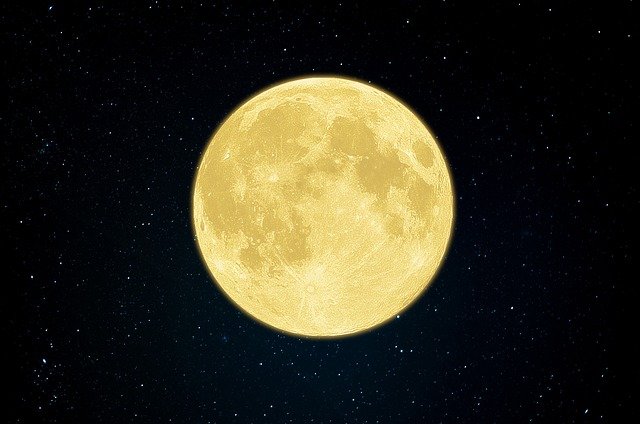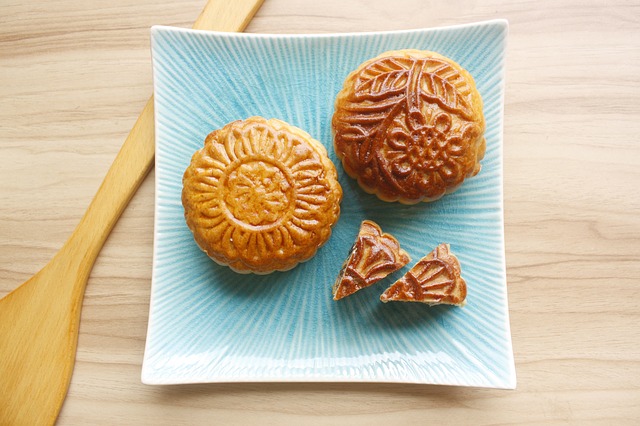Moon Cakes: A Mid-Autumn Festival Tradition Posted by sasha on Sep 20, 2021 in Culture, Holidays
Today is the Mid-Autumn Festival. This is an important traditional Chinese festival. It is the fifteenth day of the eighth lunar month of each year (今天是中秋节。 这是中国重要的传统节日。 为每年的农历八月十五。 jīn tiān shì zhōng qiū jié. zhè shì zhōng guó zhòng yào de chuán tǒng jié rì. wèi měi nián de nóng lì bā yuè shí wǔ). Whenever you ask someone from China to describe this holiday, it’s a guarantee they will tell you all about moon cakes (月饼 yuè bǐng). In this post, we’ll learn about this traditional snack, but first here’s a little information on the holiday itself.
An Intro to Mid-Autumn Festival
The Mid-Autumn Festival is one of the oldest holidays in China, dating back 3,000 years to the Shang Dynasty (商朝 shāng cháo). Mid-Autumn first appeared in the Rites of Zhou (中秋最早出現于周禮。 zhōng qiū zuì zǎo chū xiàn yú zhōu lǐ). This was one of three ancient texts listed among the classics of Confucianism.
The festival became more popular in the following Tang Dynasty (唐朝 táng cháo), as people celebrated the harvest moon and the bounties it brought. During the Song Dynasty (宋朝 sòng cháo), an official holiday was established. Later on during the Ming and Qing (明清 míng qīng) period, it became one of the most important festivals in China.
As is the case with most Chinese holidays, there’s an interesting legend behind the Mid-Autumn Festival. You can read about it in this post I wrote a few years back:
For a great listening and reading exercise, I also recommend checking out this new video from Crazie Laoshi. She details the legend behind the holiday, speaking slowly and clearly along with subtitles featuring both characters and pinyin:
Despite its long history and importance in Chinese culture, Mid-Autumn Festival wasn’t an official public holiday until 2008. This happened after the Chinese government decided to give up on the idea of having Labor Day become a 3rd “Golden Week” (黄金周 huáng jīn zhōu). They shortened that and added three more one-day holidays, all of them ancient festivals. In addition to Mid-Autumn, they added Tomb Sweeping Day (清明节 qīng míng jié) and Dragon Boat Festival (端午节 duān wǔ jié) to the holiday calendar.
This fall harvest festival always falls somewhere between mid-September and early October on the eve of a bright full moon (圆月 yuán yuè) and it’s all about gathering the family together for a reunion (团圆 tuán yuán) and gazing at the moon. Of course, since it’s such a short holiday (only one day) many people can’t make it home to be with family members (家人 jiā rén). Home or not, you can stare up at the moon knowing that your loved ones are doing the same thing.
In ancient times, people prayed to the moon for a good harvest. These days, however, most people celebrate the holiday by feasting on moon cakes. Speaking of those lunar delicacies, let’s learn more about them!
Moon Cakes
So what exactly are moon cakes? They are small, round pastries that are said to resemble the full moon. Moon cakes have many fillings, such as lotus seed paste, red bean paste, and five nuts (月饼馅料很多,有莲蓉、豆沙、和五仁。 yuè bǐng xiàn liào hěn duō, yǒu lián róng, dòu shā, wǔ rén). The latter refers to a filling composed of five different nuts or seeds, which varies from region to region.
You know the festival is approaching when you start seeing the ads for moon cakes everywhere you go. For English teachers such as myself, Mid-Autumn Festival means receiving an ungodly amount of these lunar pastries from students. Some are downright awful, some are tolerable, and some are actually quite tasty. One thing’s for sure – not all moon cakes are created equal.
To help school you before this big holiday and help you get ready, here are some videos from around the web about the famous Mid-Autumn Festival snack:
A detailed guide to moon cakes from Off the Great Wall.
This video from Tasty shows you how to make moon cakes.
Practice listening and learn how to make moon cakes in this video from Magic Ingredients.
Sing along in Mandarin to the song “Moon Cakes” from the Netflix movie “Over the Moon.”
I hope you found this post informative and fun, and that you are able to enjoy some moon cakes yourself on this traditional Chinese holiday! Let us know which flavor is your favorite in the comments below. To all of our readers, I’d like to end this post by saying…
中秋节快乐!
zhōng qiū jié kuài lè
Happy Mid-Autumn Festival!

Build vocabulary, practice pronunciation, and more with Transparent Language Online. Available anytime, anywhere, on any device.






Leave a comment: